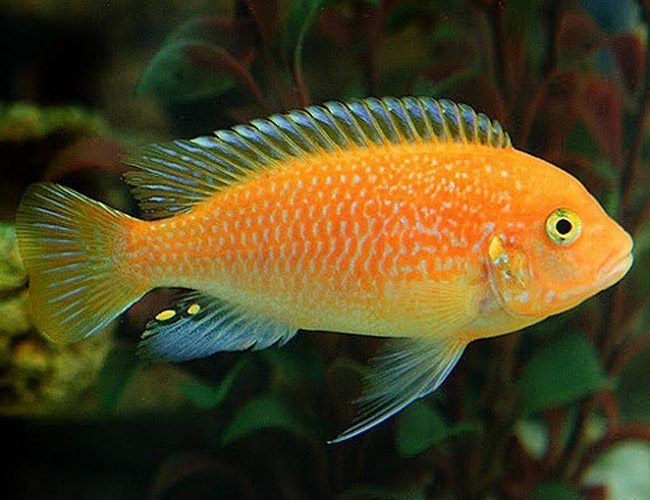
There is also a third variant known as "Orange Blotched", these are rare in the wild but popular in the pet trade, they are mottled in colour and both male and females are found with this colour pattern. They are endemic to Lake Malawi, and they can be found. They are are a bright blue colour, with a hint of barring. Red Zebra Cichlids (Maylandia Estherae) are beautiful rock dwelling fish from Lake Malawi of Africa. While typically both males and females are orange-yellow in colour, a blue morph of the male is also found (typically those collected from the Minos Reef area of Lake Malawi). Identification A relatively short bodied Mbuna Cichlid which can vary in colour morphs depending on their origin in Lake Malawi. Sand substrate is also preferred as they like to dig their homes out.īehaviour A mid-tempered territorial Mbuna Cichlid. The more caves or hiding places the better. Red Zebra Cichlid: African Cichlids: Cichlidae: Metriaclima estherae: Males in the wild are blue or pinkish while females are dark orange or red.

Most people find success in twice a day but only as much as they can eat in two minutes.Įnvironment specifics These are rock dwelling fish and do best in any rocky habitat. Do not give too much protein as the Mbuna are mostly vegetarians and too much protein can cause Malawi Bloat or other problems.įeeding regime Feed like any other Mbuna. Common names are derived from their color patterns and popular varieties include the Cherry Red Zebra and the more recently developed Super Red Zebra. Can be kept with other similar-tempered Mbuna, but avoid other similar-shaped "Zebra" species, such as Maylandia callainos or Labidochromis caeruleus, as they can hybridise which is undesirable.ĭiet Will graze on algae. Females can be yellow, orange, or orange with dark mottling. They should be considered mid-tempered compared to other Mbuna. Males will be territorial to one another, but arguments rarely involve any serious injuries. Tank compatibility These should be kept in a harem of 1 male to 3-4 females. Female holds for 21-28 days after which the fry are released. Eggs hatch and the fry are reared in the mother's mouth. Wild females display a deep orange or red. The spots develop at random, and some may be more spotted than others. Males in wild species display a bright blue coloration with vertical black bars of varying degrees of intensity. OB fish have black spots throughout their bodies. The female releases the eggs and also hurries to collect the eggs in her mouth, the male has eggs spots in its anal fin to confuse the female to thinking that they are also eggs and hoodwinks the female to collect the sperm in its mouth and fertilization happens in the mouth. Remarks: The OB variant of the Red Zebra (Metriaclima estherae). Blue variants of the males are also present. Sexing Dimorphic, Females are lighter colour of orange than males. Additional names Red Zebra Mbuna, Ice Blue Zebra, Cherry Red Cichlid, Orange Blotch Cichlid Additional scientific names Metriaclima estherae, Pseudotropheus estherae


 0 kommentar(er)
0 kommentar(er)
